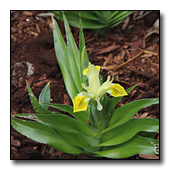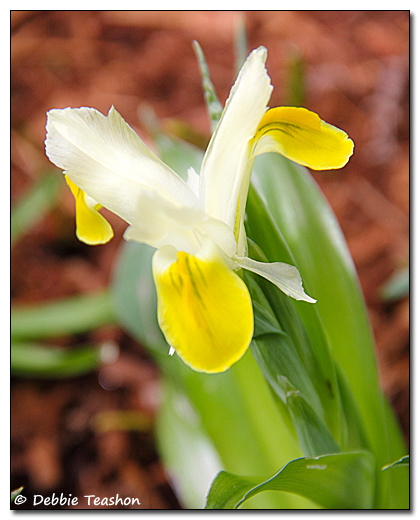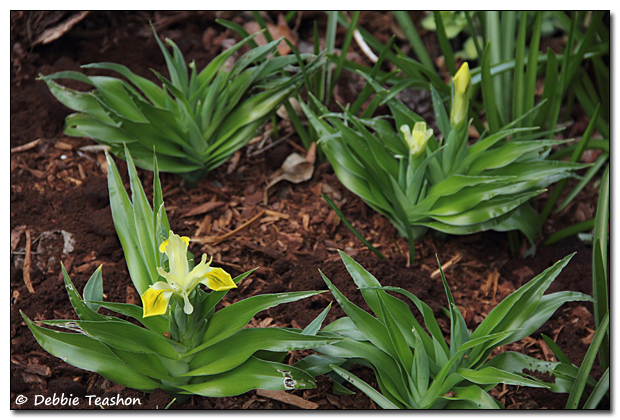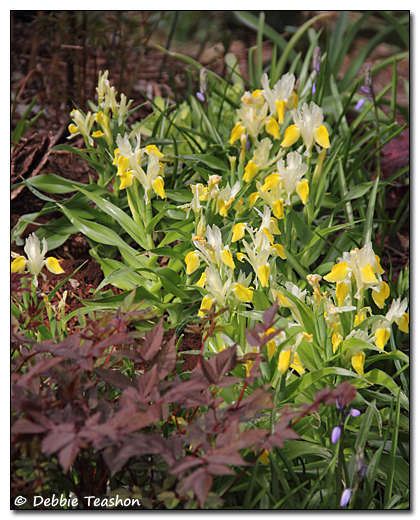Iris bucharica
JUNO IRIS
syn. n/a
Family: Iridaceae
Pronounced: EYE-ris buk-AR-ee-kuh

Quick Jumps
Growing Guide
Rainy Side Notes
GROWING GUIDE

Origin:
Afghanistan, Tajikistan and Uzbekistan.
Plant Group:
Bulbs.
Hardiness:
Sunset zones: Not listed.
USDA zones: 5-9.
Heat zones: 9-5.
Mature size:
Height: 8-16 inches (20-40 cm)
Flowering period:
Late March to early April.
Flowering attributes:
Up to seven flowers per stem, with white style branches and standards with yellow falls.
Leaf attributes:
Green glossy leaves up to 8 inches long and striated underneath.
Growth habit:
Clumping.
Light:
Full sun to very light shade.
Soil:
Neutral, fertile, well-drained soil.
Feeding:
Use a low nitrogen fertilizer during the growing season.
Propagation Methods:
Sow fresh seed.
Lift and divide the fleshy roots taking care not to damage them.
Pests and Diseases:
Susceptible to root rot. Viruses are a problem—if you see leaf striping, dig up the whole plant and destroy it. Protect from slugs. Aphids can be a problem with spreading viruses.
Rainy Side Notes


Only a handful of the Juno iris can be successfully grown in our Northwest gardens, and this one is the most vigorous of them all, and also the most widely grown. The first spring they came out of the ground after fall planting, they stole my heart. I like the fan of foliage and that the flowers sit on top of the fan and in the axils of the foliage. Unfortunately, the slugs like this cute little number too. Next year I will be more vigilant on protecting the handsome foliage from mollusk attacks.
Introduced to England in 1902 and classified as a subgenus Scorpiris, taxonomists may eventually reclassify them into a separate genus of their own.
Most Junos hail from desert conditions and thrive with very little water and lots of heat. In the wild, this Juno grows on stony or grassy slopes and can make a fine rock garden specimen. Iris bucharica can be successfully grown in our Northwest climate if you provide adequate drainage and protection from slugs.
Carefully divide clumps every few years to avoid damaging the fleshy roots after the plant has gone dormant.
Some parts of this plant are poisonous.
Photographed in author's garden.

Gardening for the Homebrewer: Grow and Process Plants for Making Beer, Wine, Gruit, Cider, Perry, and More
By co-authors Debbie Teashon (Rainy Side Gardeners) and Wendy Tweton
Copyright Notice | Home | Search | Bulbs

